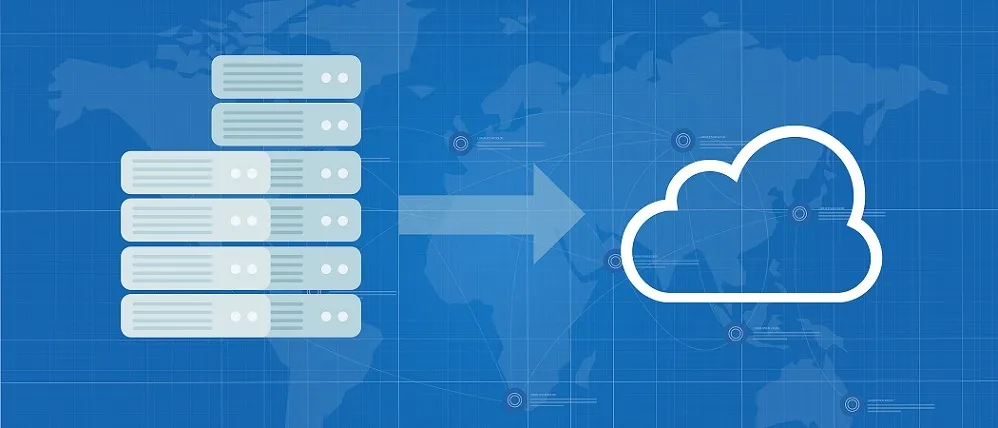How Much Does Cloud Migration Cost? A Breakdown
How Much Does Cloud Migration Cost? A Breakdown
Migrating to the cloud can be an attractive solution for organizations looking to improve their IT capabilities. By taking advantage of cloud-based solutions, companies are able to utilize cutting edge technology and save costs associated with purchasing hardware and software. However, there is still a cost associated with migrating to the cloud, which many businesses may not have considered. This article will break down some of these costs in order to provide readers with more information about how much does it typically cost to migrate to the cloud.
The first step when considering a move to the cloud should be understanding what’s involved in terms of cost. This includes any fees related to setting up accounts or services with a vendor as well as other incidental expenses that come along with migration such as training staff or additional infrastructure setup time. The total cost will vary depending on factors like size of organization and complexity of operations; however, this article provides general guidelines for estimating the overall cost of migration.
In addition, there are certain measures that organizations can take prior to beginning their migration process so they can minimize any unexpected costs during the transition period. These steps include analyzing current applications and data sets before moving them over, researching different vendors thoroughly, negotiating pricing plans if possible, and creating detailed project plans outlining each stage of the process from start to finish. All these strategies can help ensure that the migration process goes smoothly while also keeping costs under control.
What Is Cloud Migration?
Cloud migration can be likened to a journey into the unknown. It is the process of transferring data, applications and other related components from one computing environment to another. The move from an existing on-premises infrastructure to a cloud environment requires careful planning and execution in order for it to be successful.
The cost of cloud migration depends on several factors such as the size of the organization, complexity of workloads, type of services needed and whether or not any additional staff will need to be hired for the transition period. In addition, there are also costs associated with migrating specific applications such as databases, web servers, storage systems and security protocols which must all be considered when calculating overall expenses.
Organizations should expect to spend anywhere between $5,000-$10,000 per month depending on their individual needs. This cost breakdown includes server hosting fees, software licensing fees, network bandwidth charges and any additional resources required for making the transition smoother and more efficient. Additionally, organizations may encounter hidden costs due to unforeseen issues that arise during integration or initial setup processes.
Assessing Your Cloud Migration Needs
Cloud migration is like a puzzle; with each piece of the assessment, the picture comes into focus. The second step in any successful cloud migration process is assessing your needs to ensure that you are taking the most effective and cost-efficient route for your organization. By properly evaluating the tools needed before beginning a project, businesses can develop an accurate plan that allows them to migrate effectively and securely.
The first element to consider when assessing your cloud migration needs is staff requirements. This includes both technical personnel who will help manage or implement the transition as well as non-technical team members who need access to new systems during and after the move. Understanding how many people are involved ahead of time will ensure there are no surprises down the line.
Next, it's important to take stock of existing IT infrastructure and applications. Companies should look at what they currently have running on premises as well as whether any upgrades may be necessary for their current environment prior to migrating data offsite. Additionally, companies must determine which workloads would benefit from moving to a cloud provider such as Amazon Web Services (AWS) or Microsoft Azure versus continuing traditional hosting services in-house. Taking inventory early on helps organizations save money by avoiding unnecessary costs associated with cloud migrations gone awry due to inadequate planning.
Ultimately, proper assessment of cloud migration needs ensures that businesses are investing their resources wisely while also providing secure solutions for their users’ data and applications. Armed with this information beforehand, companies can create actionable plans tailored towards their specific objectives instead of wasting funds on expensive processes or relying on guesswork alone.
Understanding The Cost Factors Involved
Unpacking the cost of cloud migration is akin to unpacking a box of surprises. There are many factors that come into play when determining the overall cost. To understand these various elements, it is important to look at each one carefully and assess its impact on the total budget.
The first factor to consider is the type of cloud service model you will use: Infrastructure as a Service (IaaS), Platform as a Service (PaaS) or Software as a Service (SaaS). Each has its own set of costs associated with setup, maintenance and usage fees, making it critical to weigh up which option best suits your business' needs before committing. Additionally, if you opt for an IaaS solution, there may be additional hardware costs depending on the size and scope of what you're migrating.
Another key factor in assessing cost is deciding how much staff time will be needed throughout the process. If you have an internal team available to manage certain aspects such as data migration and testing then this can help reduce some expenditure but may require more upfront investment in terms of training them up for the job. It's also worth considering whether any external consulting services might be necessary - this could come at an extra charge but can save time in understanding exactly what needs doing ahead of getting started.
For those looking to migrate their operations over to the cloud, taking stock of all possible cost factors involved should form part of any successful strategy going forward. Factoring in specific details like software requirements, implementation timeframe and ongoing support means businesses can build out a detailed picture of what they need versus what they want - allowing them to make informed decisions about their digital transformation journey without breaking the bank.
Estimating The Cost Of Cloud Migration
The cost of cloud migration is often a major concern, as organizations look to the potential savings and increased flexibility that the cloud can provide. Estimating the cost involved in making this transition requires an understanding of both direct and indirect costs. This fourth step in the process delves into these considerations further.
Like any project budgeting exercise, predicting the exact cost associated with cloud migration may be difficult to do until all details are finalized; however, there are some key elements which should always be taken into account when formulating an estimate. As a general rule of thumb, it pays to plan ahead – mapping out a detailed strategy before undertaking the move will reduce surprises down the line.
When estimating the financial requirements for migrating to a cloud platform, one must consider factors such as hardware investment, software licenses and maintenance fees, labor costs (for training and implementation), data transfer expenses, backup storage capacity needs and long-term service contracts. It also helps to conduct thorough research on different vendors offering similar services prior to making any commitments – after all, not every provider offers identical features at equivalent price points. Taking stock of all relevant information allows businesses to make informed decisions about what type of solution best meets their specific needs without breaking their budget constraints.
Cost Savings Of Cloud Migration
Like a butterfly emerging from its chrysalis, cloud migration can provide organizations with great cost savings. This article will discuss the cost savings associated with migrating to the cloud and how these savings are achieved in comparison to traditional IT models.
Firstly, there is less infrastructure needed for cloud computing than what is required by on-premises data centers. With fewer physical servers and storage devices, overhead costs such as energy consumption are minimized. In addition, more efficient use of resources means that companies don’t need to invest in extra hardware or software licenses when scaling up their operations. Reducing operational costs helps businesses achieve greater financial savings overall.
Cloud computing also provides access to flexible pricing models which allow companies to pay only for the services they consume. By using this utility-based model rather than relying on upfront capital expenses, businesses no longer have to worry about paying for unused capacity or pre-purchasing service limits. Furthermore, users benefit from automated software updates; meaning that versions of applications no longer need to be maintained manually resulting in long term maintenance cost reductions.
In summary, transitioning to the cloud offers numerous advantages over conventional IT models due to reduced infrastructure requirements and improved resource utilization coupled with more economical pricing options. Both established enterprises and start-ups alike can benefit from these cost saving opportunities in order to improve their bottom line performance whilst not compromising on crucial business functions.
Cloud Migration Providers And Services
Cloud migration providers and services are solutions that enable organizations to move their applications, data, and other resources from on-premises or private cloud computing environments to public clouds. There are various types of providers available in the market, each offering different levels of service and support. These include Infrastructure as a Service (IaaS), Platform as a Service (PaaS), Software as a Service (SaaS) and Hybrid Cloud Solutions.
When selecting a provider for cloud migration, it is important to consider factors such as scalability, flexibility, cost, availability, security and reliability. Organizations should also seek out providers who offer comprehensive customer service with clear terms of agreement regarding how they handle any issues that may arise during the transition process. Additionally, companies must ensure that their chosen provider adheres to industry standards for compliance and safety protocols when transferring data between servers.
Organizations should weigh up all these considerations against the potential benefits of migrating to a cloud environment before deciding which provider best meets their needs. Doing so will help them determine if making the switch is worth the associated costs while ensuring they get the most out of their new cloud solution.
Cloud Migration Process Overview
Cloud migration is the process of moving applications, data, and other components from on-premise infrastructure to a cloud environment. It can be an expensive endeavor due to its complexity and numerous processes which need to be completed in order for a successful transition. This article will provide an overview of the cloud migration process and what it entails.
The first step in the cloud migration process is planning. During this stage, organizations must determine their specific needs, evaluate existing IT systems and resources, choose target platforms for the migration, create application architecture diagrams and security models, identify risks associated with the move to Cloud and develop a timeline for completion. Once these steps have been completed, then organizations may begin the actual migration phase.
The second stage involves migrating workloads from on-premise servers or virtual machines into a public or private cloud environment such as Amazon Web Services (AWS), Microsoft Azure or Google Compute Engine (GCE). During this phase, organizations must ensure that all necessary data has been securely transferred over to the new platform while also ensuring that there are no compatibility issues between old and new software versions. Additionally, organizations must consider any additional costs related to licensing fees for various programs used within each system as well as storage capacity requirements needed for storing large amounts of data securely in the cloud. Upon completion of this phase, quality assurance tests should be conducted to verify that all migrated workloads are functioning properly before finally transitioning them into production mode.
In summary, cloud migration requires careful consideration of multiple factors including cost analysis, workload assessments and comprehensive testing procedures prior to implementation. From detailed planning through deployment of services onto live systems - taking advantage of technologies like AWS can help companies reduce operational expenses while increasing reliability and scalability opportunities available through modern computing solutions.
Common Challenges In Cloud Migration
The transition to the cloud is often depicted as a journey, and with any voyage comes certain obstacles. The eighth step in understanding the cost of cloud migration is comprehending the common challenges associated with it.
One major issue that can arise during this process is compatibility issues between applications running locally or on-premise, and those designed for use in the cloud. For example, an application may need to be refactored if there are differences in operating systems or databases used by either environment. This could lead to significant expenses due to additional development costs. Additionally, data sovereignty laws must also be taken into account when transferring information across international borders.
Another challenge related to migrating applications involves security considerations; businesses must ensure their data remains secure in its new location, which requires extra resources and vigilance throughout the transition period. Without proper audit controls and monitoring tools in place, organizations risk exposing themselves to potential cyberattacks from malicious actors. Furthermore, compliance regulations such as GDPR require detailed documentation of all activities related to data handling within a company’s IT infrastructure prior to transferal.
Failing to consider these factors can not only raise initial migration costs but also increase long-term expenditure due to unexpected complications after deployment. As such, it is essential for companies considering a move towards cloud computing solutions understand how best they can mitigate against these risks before taking the plunge into digital transformation initiatives.
Tips For Reducing Migration Cost
Migrating to the cloud can be a complex and costly process. The cost of migration depends on several factors, such as business size, complexity of the system, resource requirements, and more. While it is impossible to give an exact estimate for all scenarios, there are some tips that organizations can follow in order to reduce their costs.
First, companies should assess their current infrastructure before migrating; this will enable them to identify which applications need to migrate and how much effort each application requires. Additionally, companies should also decide if they need any additional resources or tools beyond what they already have available in-house. This assessment stage helps organizations understand their move to the cloud and allows them to better plan for a successful transition with minimal disruption and fewer associated costs.
Second, organizations should look into software solutions that offer automation capabilities when deploying virtual machines (VMs). Automation reduces the time needed for manual configuration processes and cuts down on errors during deployment. Automated VM deployment not only saves time but also minimizes human error while ensuring compliance with security standards over time. Furthermore, automation enables developers to focus more on developing innovative applications rather than wasting valuable time setting up VMs manually.
Finally, businesses should consider using public clouds instead of private ones when possible; this way they avoid buying expensive hardware upfront and can scale quickly according to demand without incurring high expenses or delays due to lack of capacity planning. In addition, most public cloud providers offer discounts based on usage so it makes sense for companies who don’t use large amounts of compute cycles or storage space to opt for a pay-as-you-go model. By following these guidelines, businesses can significantly cut down their migration costs while still providing reliable services at competitive prices.
What To Look For In A Cloud Migration Provider
When a business is transitioning to cloud computing, selecting the right provider for their specific needs is of paramount importance. There are several key components to consider when evaluating potential providers that can help reduce migration costs and ensure successful implementation.
First and foremost, businesses should look for providers who have experience in designing efficient systems with an emphasis on cost-effectiveness. It is important to ask questions regarding how they approach migrating applications, data storage, security protocols, and disaster recovery plans. Furthermore, prospective providers should be able to provide references from existing customers who have used similar services. Seeing evidence of past successes is essential in assessing the quality of service being offered by the provider.
In addition to technical proficiency, companies should also evaluate pricing structures associated with various providers while taking into consideration long-term savings related to scalability and maintenance. By understanding upfront what options are available based on current requirements as well as future growth expectations will allow businesses make fiscally responsible decisions. Finally, it is vital that the cloud migration provider provides reliable customer support for any issues encountered during or after the transition process has been completed; this includes training staff if necessary so everyone knows how to utilize the new system effectively.
Cloud migrations offer numerous benefits but finding an experienced provider who can meet all your needs at an affordable price point requires careful research from both sides before making a commitment. Doing due diligence ahead of time will save money in the short term and continue paying dividends far into the future.
Cloud Migration Has Become An Increasingly Popular Option For Businesses In 2023
Cloud migration has become an increasingly popular option for businesses seeking to reduce costs and improve their operations. It is important, however, for organizations to understand the cost factors involved in cloud migration before making a decision about whether or not it is the right choice for them. In order to make informed decisions, companies should assess their needs, estimate costs associated with migration, consider potential savings from moving to the cloud, be aware of common challenges that may arise during the process, and look for a provider who can offer affordable solutions. Doing so will help ensure successful migration while maximizing cost-savings.
The key to successful cloud migration lies in careful planning. Companies must evaluate all aspects of the process including budgeting and timeline constraints as well as identifying any technical issues they may encounter along the way. Taking time to prepare adequately can save significant money down the line by preventing costly mistakes or delays. Furthermore, selecting a reliable provider who understands your business objectives and offers competitive pricing can also help minimize costs while ensuring a smooth transition into the cloud environment.
Overall, understanding how much your organization should expect to pay for cloud migration requires careful consideration of various factors such as assessment of needs, estimation of costs involved in migrating data and applications, consideration of potential cost savings post-migration, awareness of common pitfalls throughout the process, and discovering an ideal partner whose services meet your financial requirements. With proper preparation and due diligence in this area ‘like two peas in a pod’ , organizations stand to gain tremendous value from transitioning to the cloud without breaking the bank.
Let Us Help You!
Sign up to our newsletter












